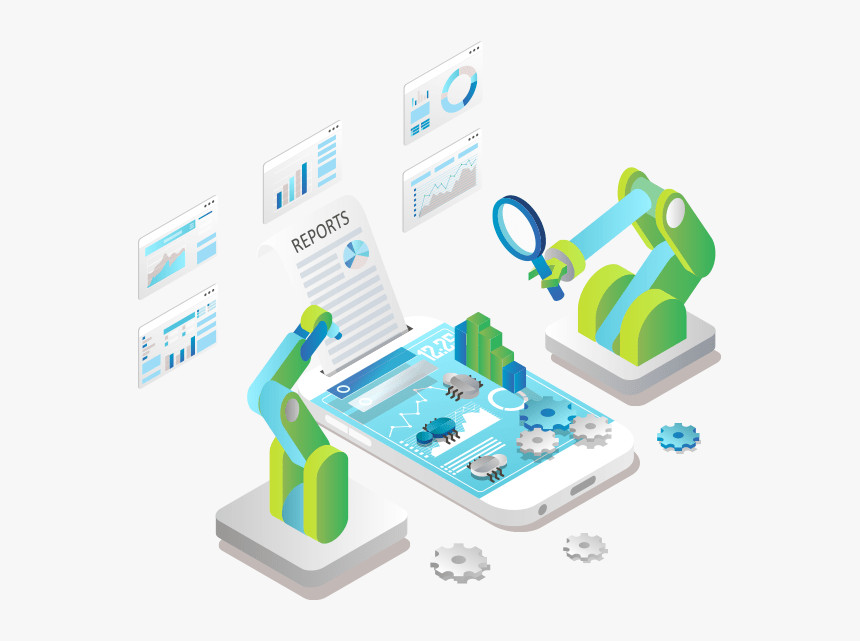Types of Software Testing – The software development lifecycle (SDLC) depends on software testing. It guarantees that the finished product satisfies the needs and performs as planned. Testing has become a wide sector with various types and techniques suited to unique testing requirements as software gets more complicated. Software testing, from unit testing to user acceptance testing, is important to preserving software quality and offering end users a dependable product. What is software testing? The Types of Software Testing will all be covered in this blog.
Table of Contents
ToggleWhat do you mean by Software Testing?
Software testing is the process of making sure that programs fulfill their needs and work as intended under a variety of circumstances. It entails evaluating and confirming that a software program works as intended and is error-free. Finding errors, guaranteeing quality, and improving the user experience are the main objectives of software testing.
Types of Software Testing
Software testing is typically divided into two categories: automated testing and manual testing. Each of these categories has a lot of subtypes.
Functional testing
Functional testing confirms that every feature of the software program works as specified by the requirements. Databases, client or server apps, security, APIs, user interfaces, and software performance are all tested.
Unit testing – Unit testing is the foundation of software testing, where we dive deep into evaluating individual modules or components of an application. This crucial step ensures that each part functions as intended, setting the stage for a robust and reliable software experience. By focusing on these smaller elements, we pave the way for smoother overall performance and easier troubleshooting down the line. This type of testing is typically carried out by developers during the software development lifecycle’s coding phase. Unit tests make sure that every software element works as intended.
Integration testing – Integration testing involves verifying the interfaces between units or modules. It ensures that combined modules work as intended.
System testing – System testing evaluates the system as a whole and verifies that the final product satisfies the needs.
User Acceptance testing – The last stage of functional testing is called User Acceptance Testing (UAT), where the software is tested by the intended users in a real-world setting to see if it lives up to their expectations.
Non-Functional
Non-functional testing evaluates the software’s dependability, functionality, and usability. This group is made up of –
Performance testing – Performance testing assesses the software’s stability, responsiveness, and speed in a range of scenarios. It encompasses endurance, stress, and load testing.
Usability testing – Usability testing is essential for assessing the software’s ease of use. It entails assessing the user interface, task completion skills, and general user satisfaction.
Security testing – Software vulnerabilities are found via security testing, which makes sure the program is safe from threats and attacks.
Compatibility testing – Compatibility testing makes sure that the program works properly in a variety of settings, like different operating systems, browsers, and devices.
Localization testing – This process confirms that the program functions as intended in different locations, including support for several currencies, data formats, and languages.
Regression testing
To make sure the new code has not affected the functionality that already exists, regression testing is done after code changes. As software develops, this type of testing is important to preserving its honesty.
Exploratory testing
Exploratory testing is a non-formal approach in which testers actively inspect the application without using pre-written test cases. To find flaws that structured testing might overlook, it depends on the tester’s imagination and intuition.
Automated testing
Automated testing runs test cases automatically, utilizing specialized tools. Regression testing and other time-consuming, repetitive tasks benefit from it. Scripts are utilized to create automated tests that can be implemented repeatedly with little assistance from humans. Continuous testing in agile and DevOps environments needs this type of testing.
Test Automation Tools – Selenium, JUnit, and TestNG are popular for automating both functional and regression tests. They help in the accurate and effective execution of high test volumes.
Ad Hoc testing
Informal and unstructured testing carried out without specific preparation or documentation is known as ad hoc testing. The main aim is to utilize random checking to find flaws.
Sanity testing
A subset of regression testing known as sanity testing is aimed at confirming specific features following small code modifications. It guarantees that no new bugs have been introduced into the system as a result of the changes.
Smoke testing
Smoke testing, also known as build verification testing, is a preliminary test that determines which main features of a software program are functioning properly. To make sure the software is enough stable for additional testing, it is carried out prior to more thorough testing.
Alpha and Beta testing
Alpha testing – Before making the software available to outside users, the firm’s internal teams carry out alpha testing. Before the product is put through beta testing, it finds bugs.
Beta testing – The last stage of testing before a product is made available to the general public is called beta testing.
To find any lingering problems, actual users test the program in a production setting.
Black Box and White Box testing
White box testing – White box testing, also referred to as structural testing, analyzes the internal structure and functionality of an application. It is typically carried out by developers and necessitates code knowledge.
Black box testing – Testing software’s performance without being aware of how it works internally is known as black box testing. It decides if the program satisfies the user’s requirements.
Gray Box testing
White box and black box testing are combined to make gray box testing. The tester can create more effective test cases because they have some understanding of the internal operations of the software.
Accessibility testing
Software usability for people with disabilities is guaranteed by accessibility testing. It entails verifying that the program complies with accessibility rules and regulations.
Conclusion
Creating an effective testing strategy requires a clear understanding of the various types of software testing. Businesses can reduce the risk of defects, improve software performance, and eventually offer their users a better product by investing in suitable testing.
FAQs
What is the main objective of unit testing?
To find bugs early in the development process, unit testing independently tests the performance of separate modules or components.
What makes unit testing apart from integration testing?
Integration testing makes sure that these elements work together and communicate effectively, whereas unit testing focuses on individual components.
How is software protected by security testing?
By detecting weaknesses that malevolent actors might use, security testing makes sure that private information is kept safe.
What makes software testing necessary?
Before being released, software testing makes sure that apps are dependable, safe, and effective. It guarantees adherence to industry-based standards, reduces risks, enhances user experience, and helps in the early detection of defects. By lowering costly mistakes and security flaws, it also contributes to better software quality.








 Call us:+1 (289)-499-4040
Call us:+1 (289)-499-4040 Contact Us
Contact Us